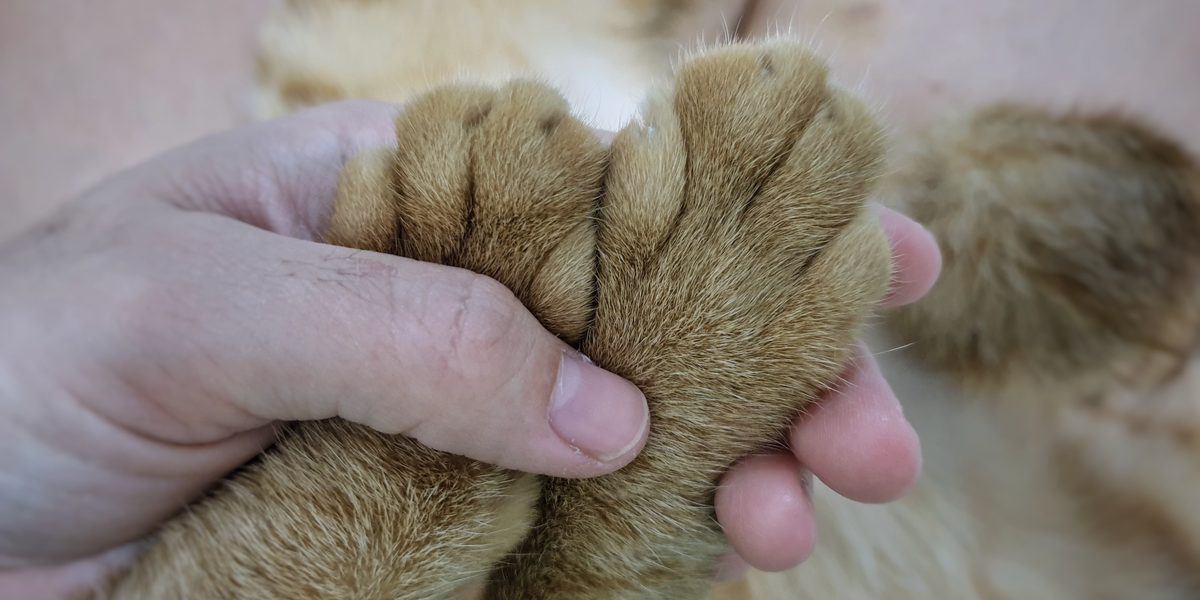
Declawing is a surgical procedure that permanently removes a cat’s claws. It’s one method used by cat owners to prevent a cat from damaging household items like furniture, carpets, and curtains when the cat scratches, which is normal feline behavior.
Once seen as a routine practice, declawing cats has become a hot-button topic in recent decades, as more people have come to view the procedure as inhumane and even barbaric.
About Declawing Cats
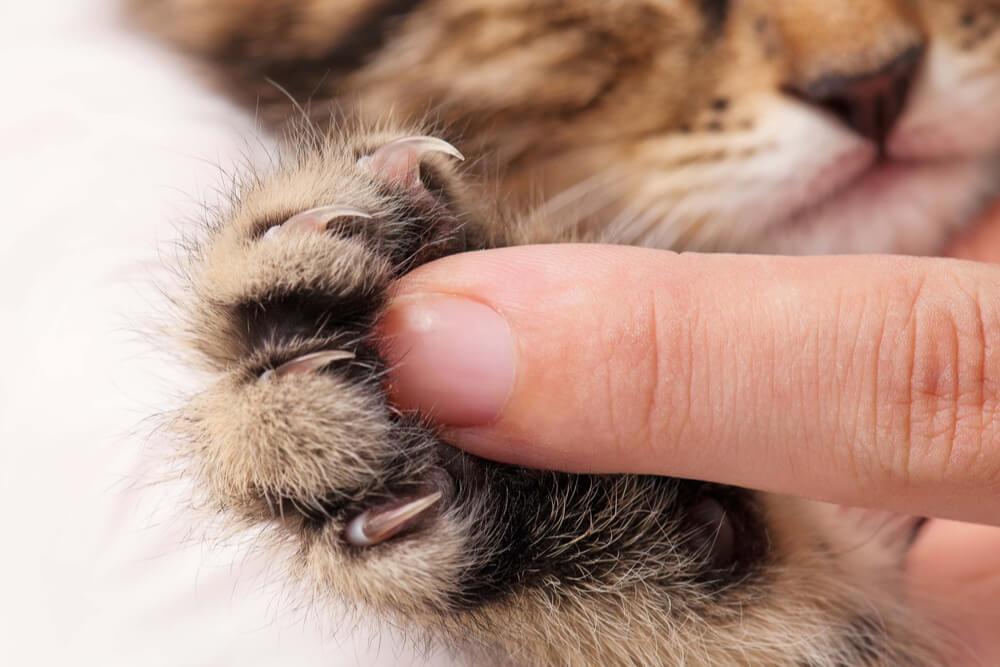
Declawing doesn’t just remove a cat’s claws. It partially amputates their toes, removing the last bones and ensuring that the claws can’t grow back.
The cat declawing surgery is officially known as an onychectomy.
Declawing is a partial digital amputation—the distal phalanx (last bone) of each toe is removed with a surgical blade (scalpel), surgical laser or sterilized guillotine-style nail clipper.
Because the claws are attached to the distal phalanges (plural for phalanx), removing these bones means the claws will not grow back. However, in some instances, the surgeon may fail to remove the entire distal phalanx, in which case the claw might experience regrowth.
A declaw surgery is performed while the cat is under anesthesia. The veterinarian surgically removes the last toe bone of each toe, then closes up each toe with sutures (usually dissolvable stitches) or surgical glue, and bandages the paws. Typically, only the claws on the front paws are removed because cats mostly use their front paws for scratching.
An alternative surgery to a declaw surgery is a tendonectomy, in which the tendons under the toes are cut to prevent the cat from extending its claws.
Pros of Declawing Cats
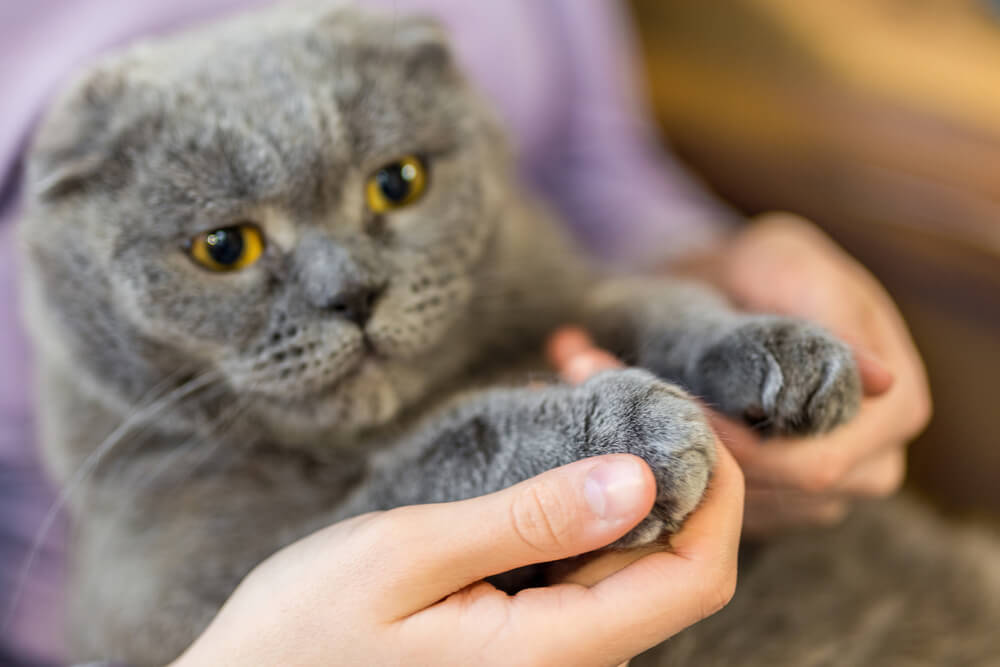
Declawing cats is sometimes medically indicated, for instance, if the cat has a tumor on the toe or has injured its paw so severely that amputating the ends of the toes is medically necessary.
Additionally, some people claim that declawing cats may save the lives of cats that would otherwise be euthanized in shelters because their owners don’t want to live with their destructiveness.
In some instances, declawing might allow an owner to keep a cat that scratches them (intentionally or unintentionally), especially for people who are ill or immuno-compromised.
Cons of Declawing Cats

There are many downsides to declawing cats.
Those opposed to elective declawing of cats cite numerous objections to declawing cats, including the following:
- Declawing surgery is painful for the cat
- Potential for infection after surgery
- Surgical amputation is an unnecessary mutilation
- Declawing takes away a natural behavior for cats
- Declawed cats cannot defend themselves from other animals
- Some cats may have long-lasting pain or phantom pain
- Lameness (limping or problems walking, running or climbing)
- Some people claim declawed cats develop other unwanted behavior issues like aggression and inappropriate elimination (urinating outside the litter box)
Is Declawing Cats Painful?
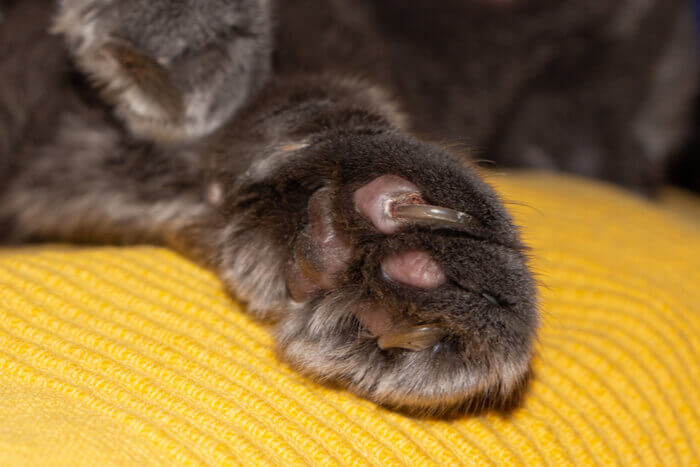
If left untrimmed, cat nails can grow until they puncture the paw pad, which is painful and can cause an infection.
Declawing is a surgical amputation of the last knuckle of each toe. As with any surgery, a declaw surgery is very painful for the cat.
For this reason, most veterinarians routinely prescribe analgesic medication to assist with pain. If your cat is being declawed, ask your veterinarian about the pain-management protocol they plan to use.
Whether declawed cats experience pain that lasts beyond the immediate recovery period is not known for sure.
The topic is hotly debated and even has a name: post-declaw pain syndrome. Some people believe that cats experience pain after a declaw for not just days or weeks, but months or even years, due to nerve damage that occurs during the surgery.
Pain may be traditional pain or may be “phantom pain,” similar to what human amputees report (feeling pain in a limb that is no longer there). Cats may limp or exhibit other signs of pain or discomfort long after they have healed from the surgery.
Some people also believe that declawed cats have more behavioral problems related to chronic residual pain, such as litter box avoidance and aggression. Because declawing a cat changes the shape of the foot, the procedure may also affect how the cat walks, runs and climbs.
How Long Does it Take for a Cat to Recover From Declawing?

The full recovery period following a declaw surgery takes anywhere from two to six weeks, depending on the cat’s age and size.
Recovery seems to be harder for an adult cat compared to a kitten, likely due to the fact that a fully grown cat is heavier, so walking around on its wounds is more painful. While the cat is recovering, it’s important to keep them indoors so the paws stay clean and dry. Until the cat’s paws are completely healed, shredded paper must be used in the litter box in place of clay or clumping litter.
How Much Does it Cost to Declaw a Cat?

The cost of declawing a cat varies widely depending on where you live.
Because declawing is a surgical procedure that requires anesthesia, expect to pay somewhere between $300 and $1,000 depending on the age and weight of the cat, as well as whether you opt for the recommended pre-anesthetic bloodwork and IV catheter with fluids or other recommended tests or services.
Is Declawing Cats Legal?
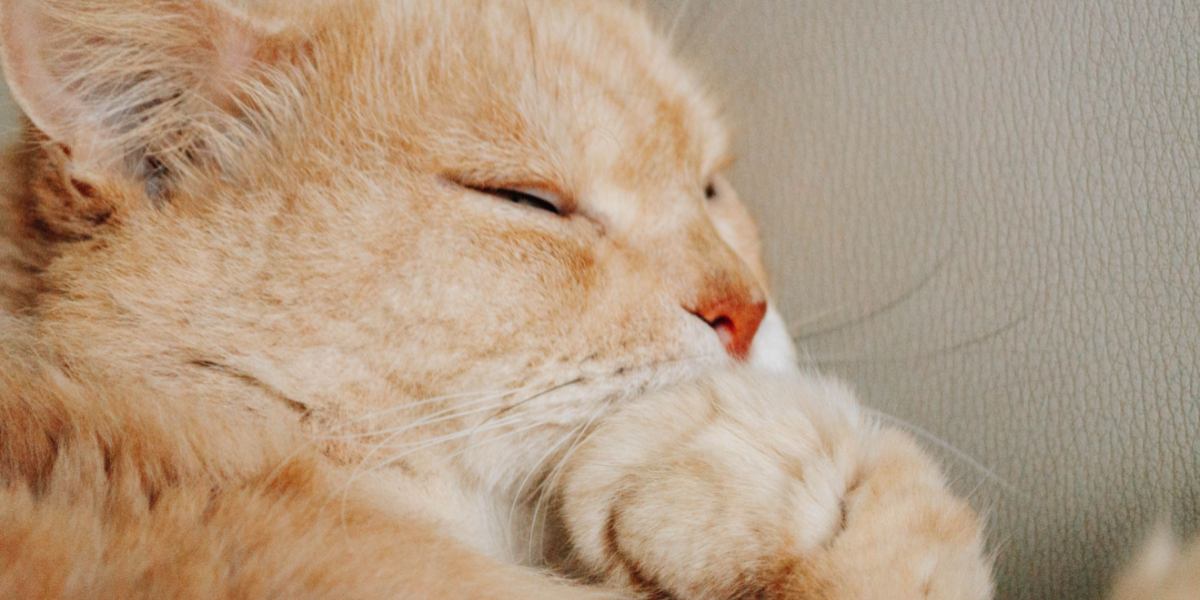
Depending on where you live, declawing cats may not be permitted by law. Declawing is banned in many European countries and the United Kingdom.
In Canada, the Canadian Veterinary Medical Association states that it “opposes elective and non-therapeutic partial digital amputation, commonly known as declawing or onychectomy, of domestic cats” and that “scratching is a normal behaviour in cats.”
In the United States, declawing is illegal in a number of cities, including the city of Denver, Colorado, as well as the entire state of New York and Maryland. More and more cities and states are considering legislation to prohibit the declawing of cats.
Several major animal organizations in the U.S. are opposed to elective declawing for domestic cats, including the American Association of Feline Practitioners (AAFP), the American Animal Hospital Association(AAHA) and the American Society for the Prevention of Cruelty to Animals (ASPCA). The American Veterinary Medical Association (AVMA) states that it “discourages the declawing (onychectomy) of cats as an elective procedure and supports non-surgical alternatives to the procedure.”
Alternatives To Declawing Cats
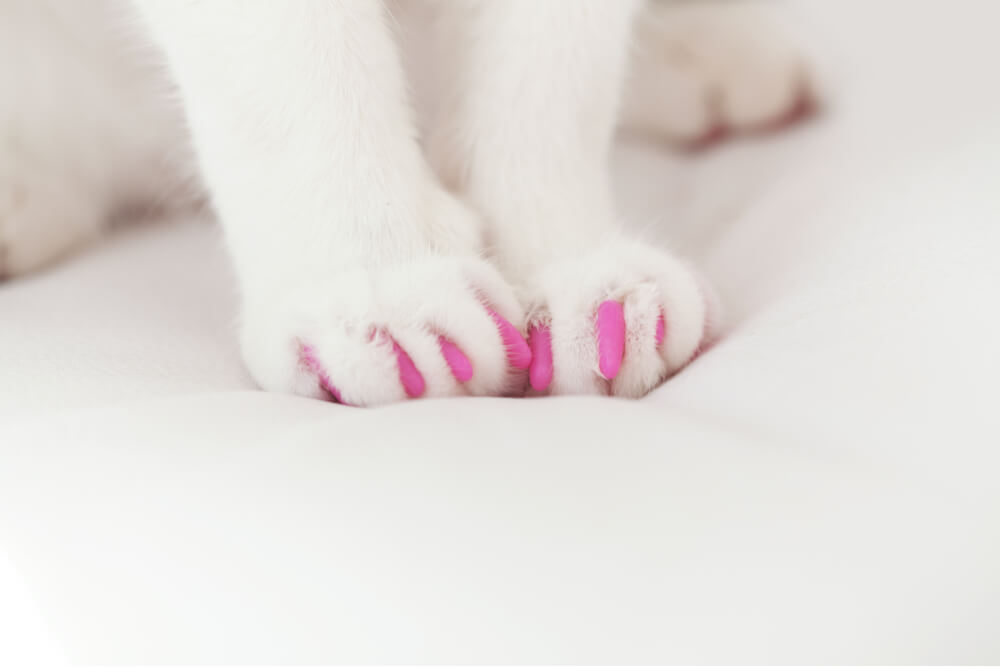
Nail or claw caps are a humane alternative to declawing your cat.
If your cat is exhibiting destructive scratching behavior, you try one of the many more humane alternatives to declawing:
1. Provide lots of acceptable scratching surfaces so your cat scratches them instead of your furniture.
Offer your cat many different objects she is allowed to scratch, including cat trees and scratching posts. Make sure to provide both horizontal and vertical scratching surfaces, and offer different types of material (carpet, sisal, cardboard, etc.).
Read More: Best Scratching Posts for Indoor Cats
2. Place scratching aversions on unacceptable scratching items.
If your cat is scratching a couch, chair, or other piece of furniture, try using a scratching aversion. One option is to cover the furniture with a protective layer of fabric (like a fitted sheet). If this isn’t enough to deter your cat, use something your cat won’t like the feel of.
Cats who aren’t deterred by fabric coverings may be less inclined to scratch surfaces covered in plastic. Try using a plastic curtain to wrap the object in question. Placing aluminum foil on the surface is another option, as is double-sided tape.
Covering a surface with double-sided tape can be tedious unless you use a product designed specifically for that purpose. KatSupreme Anti-Cat Scratch Furniture Protector is an example worth considering. It consists of large sheets of double-sided tape you can quickly affix to a variety of surfaces including polyester, cotton, and velvet. Your cat won’t like the sticky feel under their paws, so they’ll find something else to scratch – hopefully a scratching post!
For cats that scratch carpeting or other types of flooring, place a plastic office chair mat over the area with the spikey side facing up.
Place an acceptable scratching surface next to each item you cover. For instance, you might place a scratching post near the couch arm or a horizontal scratching board near the covered carpet. You can also sprinkle catnip near the acceptable scratching items to entice your cat to use them. In time, your cat will learn to leave the forbidden item alone and you can uncover it.
3. Keep your cat’s nails trimmed short.
Weekly nail trimming will keep the nails blunt so they do less damage if your cat does scratch something unacceptable.
4. Try nail caps.
Rounded vinyl nail caps like Soft Paws slip over each nail to allow the cat to scratch without causing any damage. The nail caps are secured with pet-safe adhesive glue and stay on the nail for four to six weeks, at which time they must be replaced.
Final Thoughts
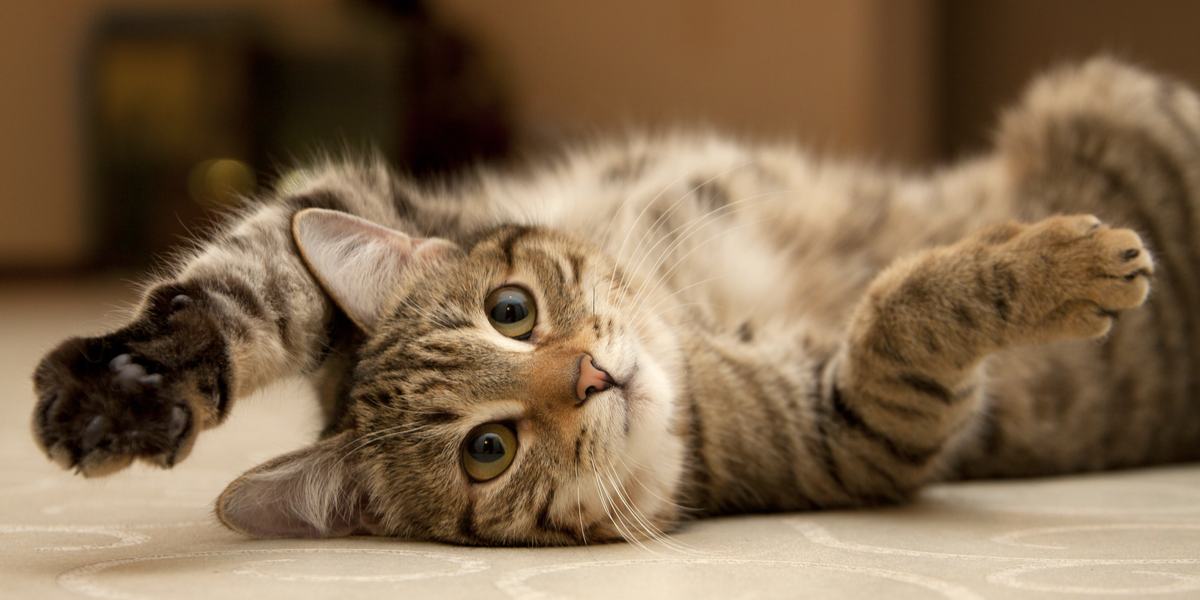
Whichever option you choose, just remember that declawing your cat can cause your furry friend quite a lot of pain and suffering. If this procedure isn’t necessary due to medical issues, consider trying one of the other, less painful alternatives listed above.

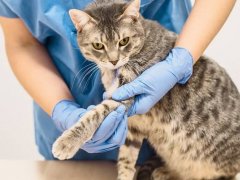

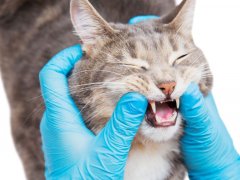




I really struggled the first time I had to get a cat declawed but my health was a factor. I had tried the claw covers but she easily removed those and I had tried some liquid stuff that was a waste of money and even a dremel tool to take the sharp tips away (I’ll let u guess how well that went over…yikes).
Finally I resorted to declawing and my cat had no problems. The Vet gave pain meds and antibiotics and we had to use shredded paper instead of litter for a few days but all went well. The cat was still young (about 4 months)…she healed quickly and never had any problems. She lived to be almost 19 years old. A special friend indeed ?
No, there isn’t a problem with declawing. It’s safe. The only “study” ever done was a non-scientific article by a single vet claiming evidence in a few cats. If we want to deal with anecdotal evidence, I have mine. I’ve had five cats over 25 years, all were declawed, and none had problems.
The first two I had done. I was traveling a lot and the cats learned not to scratch the front of the couches when I was home. The weren’t yet two years old. It took them a couple of weeks and they were zooming around as they were before. The other three I adopted as adult cats already declawed. All five run, use scratching posts, and act as normal cats.
As for the nonsense about declawing being like taking off the finger tips, it’s just that. Cats don’t use claws the way we use fingers. Also, I clip my nails and they grow back. Try clipping your fingers and seeing what happens.
While I don’t believe any cat who is allowed outside should be declawed, there’s no reason not to declaw an indoor, problem cat. People need to stop anthropomorphizing. While other mammals are very similar to us on the genetic tree, they aren’t us, and claws aren’t fingers.
Hello there! Thanks for your observations; I greatly appreciate your perspective and the fact that you’re willing to take a controversial stance on this topic. I would like to point out that there have been legitimate scientific studies done on the effects of declawing in cats. For example, this study looked at the rates of pain and adverse behaviors post-declawing in cats: https://pubmed.ncbi.nlm.nih.gov/28534655/ It found that over 60% of the declawing procedures were not done properly and left distal phalanx bone fragments in the body, and that whether the surgery left behind fragments or not, the rates of pain, aggression, and behavioral problems were higher among declawed cats. And if you’d like to research further, you might appreciate this summary of numerous studies touching upon declawing and related issues: https://dscog95ndhbkb.cloudfront.net/wp-content/uploads/2017/02/25190538/Summary-of-Articles-Studying-Surgical-Declawing-of-Domestic-Cats-FINAL.pdf
In conclusion, while your anecdotal evidence does demonstrate that cats can lead apparently pain-free, happy, healthy lives post-operation, there is a body of scientifically gathered evidence showing that declawing does come with a high rate of complications that will reduce the cat’s quality of life, whether they live indoors or outside.
“Cats don’t use claws the way we use fingers.”
……
And we don’t use wheels the same way we use cars… you do know that they remove the last bone from each digit on the paw, right?
My ex had a female indoor cat (Peanut), front paws declawed. I met her when she was about 5 yrs old. I didn’t think much of the declaw because 1. I had no idea what a declaw ACTUALLY entailed, 2. I’d never had a cat and 3. She seemed totally normal, happy and healthy. Just a beautiful kitty with no sharp claws.. seemed great!
Well the ex and I moved in together (into his house) one day we went to our local Petco. A local shelter was set up that afternoon with cages of little kitties for adoption. I held every kitten. I was convinced I had bonded with each and every one.. meanwhile the ex was side eying me the while time telling me we were absolutely not getting a kitten. Then I saw Charlie. The one kitten i didnt notice because she was desperately trying to make herself invisible behind the litter box. She had clumps of hair missing. One eye was closed and leaking. She was shaking and so skinny. I asked to hold her and I knew she was coming home with me. I pulled out my checkbook (I don’t even know why i was carrying a checkbook) I paid the adoption fee and filled out the paperwork with this shaking little kitten inside my shirt. I was told to give her back and after a background check they’d call me in a week or two… Um, nope. This kitten was obviously not doing so hot where she was and I told them “this cat is sick and needs medical attention today.. not next week. Over my dead body will I allow her to go back to wherever she is being kept.
I went and grabbed a carrier, put her in and took her home. Luckily she was separated from Peanut because the Next day at the vet we found out she had bartonella, coccidia, respiratory infection, eye infection and scabs and scratches and missing hair. Vet said she probably wouldn’t have lasted 2-3 weeks without immediate care. So started my 3 month long battle to heal Charlie. She was utterly dependent on me. I held her over the box to ‘go’ every day. Hand fed her. And the meds! I had to go to a pharmacy to have some made. All the testing and retesting was a lot. The bartonella had to be monitored and spaced out testing needs to be done. She didnt meet her sister for 4 months. But she turned around and was 100%! Then the ex dropped the hammer. He said if we keep her in “his house” and with “his cat” she has to be declawed. I lost the fight and refused to give her up so i made the appointment. Laser declaw 2 front feet. I brought her in and the tech was obviously not thrilled and I didn’t fully understand. So after they took her back i went to the car and watched declaw videos. I was horrified. Ashamed doesnt even being to cover how i felt and still feel. I ran back in and asked to take her back home, i changed my mind.. but she was already in they said. So i sat in my car and cried. And cried. When we got home we did everything by the book. 3 days post op and she started acting strange.. she was walking on her hind legs like a gopher. Everyone said its sooo cute but i knew something was wrong. She wouldnt put her front feet down. Then she stopped eating and going to the bathroom. I took her back and a different vet was there. He checked her out and after reading her chart went into action like something was really wrong. He took her to the back and shaved her paws. 2 of her toes were so badly infected she had to have one full toe amputated and another amputated half way. Her toes were black. She was in so much pain. He told me she was not given an antibiotic before the surgery or after which (before) is required there for such a surgery. They also glued the wounds rather thn use stitches. So her toes were infected and the glue prevented the pus from being able to release. Her toes were just dying and the infection festering for days. This new vet kept her for 5 days because her foot had to be soaked and drained at least 4-5 times a day. And that began the next 2 months of pain meds, antibiotics, and complete dependency on me. And it was MY fault. I dropped her to have her little baby toes chopped because my ex didnt want scratches on god knows what. She was a fully healed and heathy kitty learning to live outside the small room she knew and someone other than me by the time she was around 10 months old. Today she is a happy, spoiled rotten 9 yr old princess. We moved out shortly after the ordeal. My regret and resentment was growing and too consuming. So for the last 8 is been charlie and me against the world. And i apologize to her everyday. And every time i watch her front leg wobble because she only has 2 1/2 toes on her already declawed paws. Its heartbreaking. And for what? There was no medical reason. For my ex it was laziness and convenience. For me it was ignorance. For her.. pain, suffering and a lifetime of unnecessary discomfort. Please don’t declaw. Unless it’s to benefit the health and livelihood of the cat.. just please dont.
Charlotte, thank you so much for sharing your and Charlie’s story. This is a very powerful story that should make an impression on anyone in a similar position to where you were ~9 years ago. Wishing you and her all the best.
Nail trimming takes about 5 minutes once your cat and yourself are used to it. Imagine opting for amputation of a finger joint because you are too lazy to spend 5 minutes every two weeks clipping nails.
For Canada, it is illegal in 8 of our 10 provinces.
“According to the American Association of Feline Practitioners (AAFP), those risks include acute pain, nerve trauma and long-term complications like lameness, chronic neuropathic pain and behavioural problems.”
Thanks for sharing, Joshua.
I may have missed comments about the affect of declawing on a cat’s posture, and ultimately damage to its spine. I see this in a declawed cat I adopted.
I have had several cats over the last 30 years and have never had any problems after my cats were front declawed. They are all kept in a safe environment with high quality cat food, fresh water and several clean litter boxes. And access to any and all furniture.
I apologize about getting political, but I do notice that the areas of the USA that have banned cat declawing are heavily Democrat. I also note that these same places are very supportive of abortion. So when did declawing a cat become illegal, while killing babies is legal? Our world is messed up.
I am a full-time cat sitter and I have cared for a number of declawed cats. These cats were already declawed when the owners adopted them. EVERY declawed cat I have watched has had significant behavioral issues. Grooming to the point of self harm, toileting outside the box, fighting with other cats in their household, etc. I feel like there is a lot of discourse around not declawing your cat and what could happen if you do. Thankfully the word is getting out! However, it doesn’t feel like there is a lot of information on what you can do to help a cat who is already declawed. My clients with declawed cats seem hopeless or even are at their wits end. And because their cats can be so aggressive or cause damage they often get demonized or shamed. It’s so hard to see these kitties suffer. Are there supplements for pain? Alternatives to scratching posts? Antidepressants? I’m not even sure but it feels like no one is getting guidance.
Hi Jule, that’s an excellent observation. This article has some nice tips, and we’ll consider rounding out our related content with more tips like this.
Don’t care. I’m still declawing my cats
This severely mutilates them. How would you like it if someone hacked off your fingers?
I am adopting a cat who is declawed, do they need a special litter not to hurt their paws?
The foster lady told me I can’t use regular clumping litter because it will hurt his feet.
Hi Sonia, some cats who are declawed do prefer to use certain types of litter over others. We recommend either a fine-grained soft litter like the grass litter from SmartCat or, for freshly-declawed cats, a paper pellet product.
This procedure is horrible and is only for the purpose of making things easier for a human. I find that pretty disgusting. To cut parts off your cat to make your life easier. People who do this, make themselves feel better by saying their cat is fine. How do you know? How do you know that they don’t have pain every day of their life because you cut their toes off? Why don’t you go have all of your toes cut off at the first knuckle and then tell me it doesn’t affect you, or hurt. What a ridiculous way to reason hurting and maim your cats. If it was up to me, this will be a jailable offense against an animal. It most certainly is abuse no matter what excuse you think justifies this.
Valid points, Karen! These are some of the arguments animal advocacy groups make and some of the reasons the procedure has been banned in other countries.